11th June 2019
Event phone:
Abstract
PESGB Members do not need to register to attend
Kindly sponsored by

In 2016, as part of an effort to pursue fractured basement plays on the flanks of the Danish Central Graben (Tail-End Graben), Ardent Oil acquired with PGS a suite of broadband 3D on the most crestal portion of the rift footwall. Regional 2D and 3D Mega-Survey data sets already hinted at a long and intriguing tectonostratigraphic evolution in the area, but the resolution of deep reflectors had always left interpretations with a large swathe of ambiguity and uncertainty.
Some of that ambiguity remains, but the window the new broadband has afforded in one part of the rift flank gives an often-startling insight into the Palaeozoic and later evolution of this area and has documented some truly remarkable structures. The clarity of the top basement reflector has highlighted dramatic phases of tectonism that require very significant Palaeozoic basins and dramatic throws on long-lived major fault systems with multi-phase histories.
In the absence of deep penetrations over most of the area concerned, the precise timing of individual sedimentary packages observed on seismic is open to interpretation. It is however possible to put together a logical sequence of events that when calibrated with offset well data and regional tectonic events affecting NW Europe, allows a self-consistent working hypothesis for the evolution of this area.
The broadband acquisition has successfully met Ardent Oil’s primary objectives of imaging the top basement and internal basement structuration along the rift shoulder, most proximal to mature Jurassic source rocks. The additional insights into Palaeozoic events, especially when taken in conjunction with observed DHI’s, open an array of new questions surrounding the Palaeozoic sub-basins in the area. This includes their source-rock potential, and the evolution through time of any associated charge.
Answering such questions is a continuing effort, but the possibility of ongoing local Palaeozoic-sourced charge significantly increases the number of plays of interest offshore Denmark. These are likely to be localised to structurally controlled deeper basins where seal integrity has remained intact for the major part of any expulsion history.
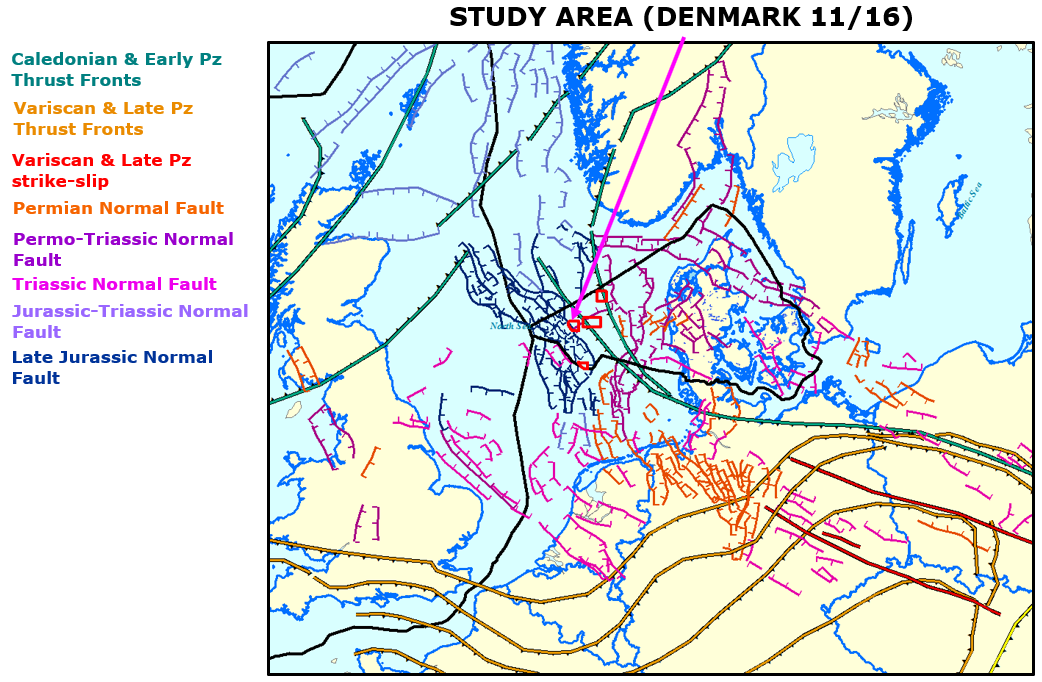
Figure 1: Offshore Denmark – A tectonic bulls-eye for the major events affecting Europe since the Precambrian
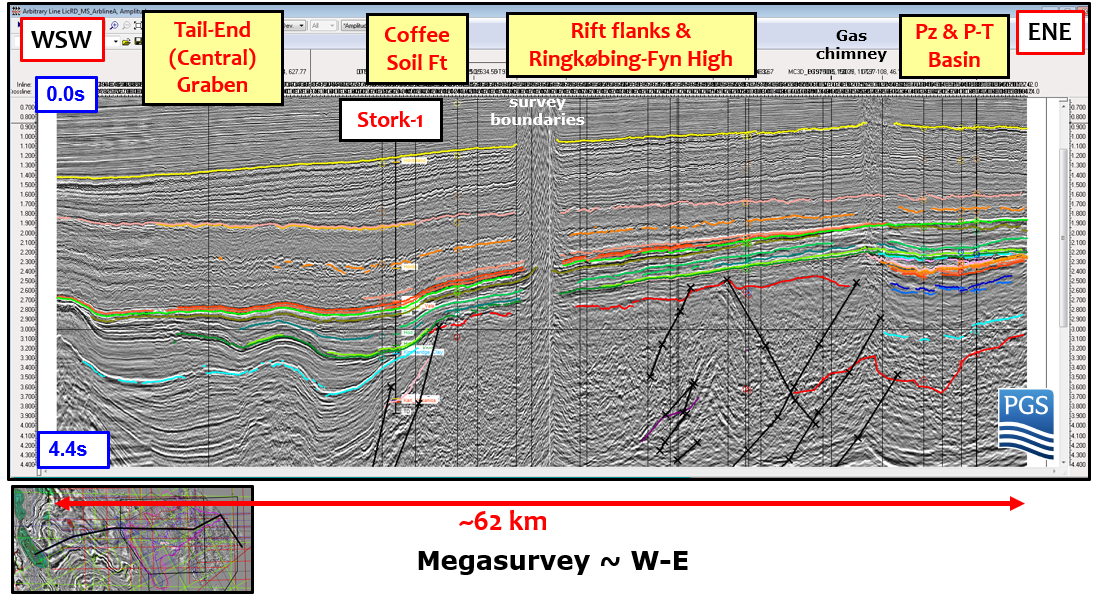
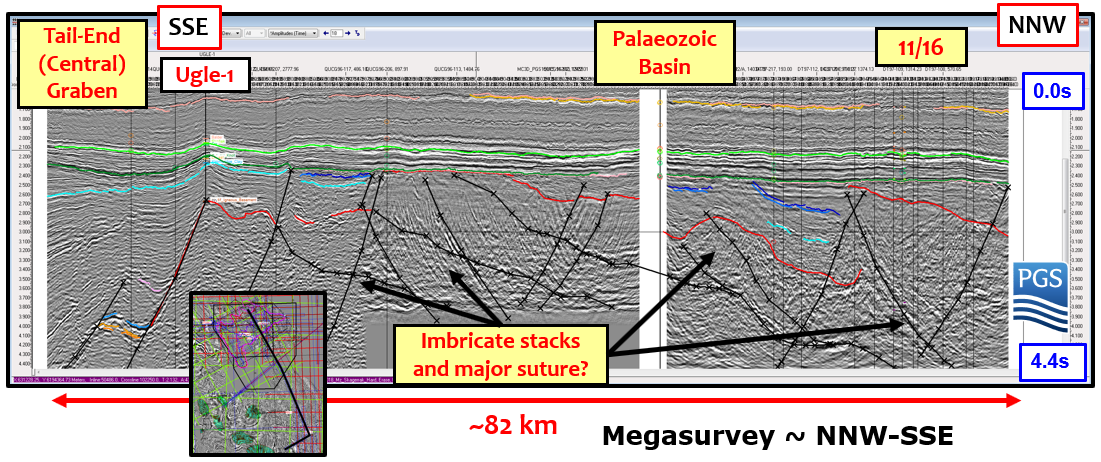
Figure 2: Regional lines with an abundance of complex structure to contemplate
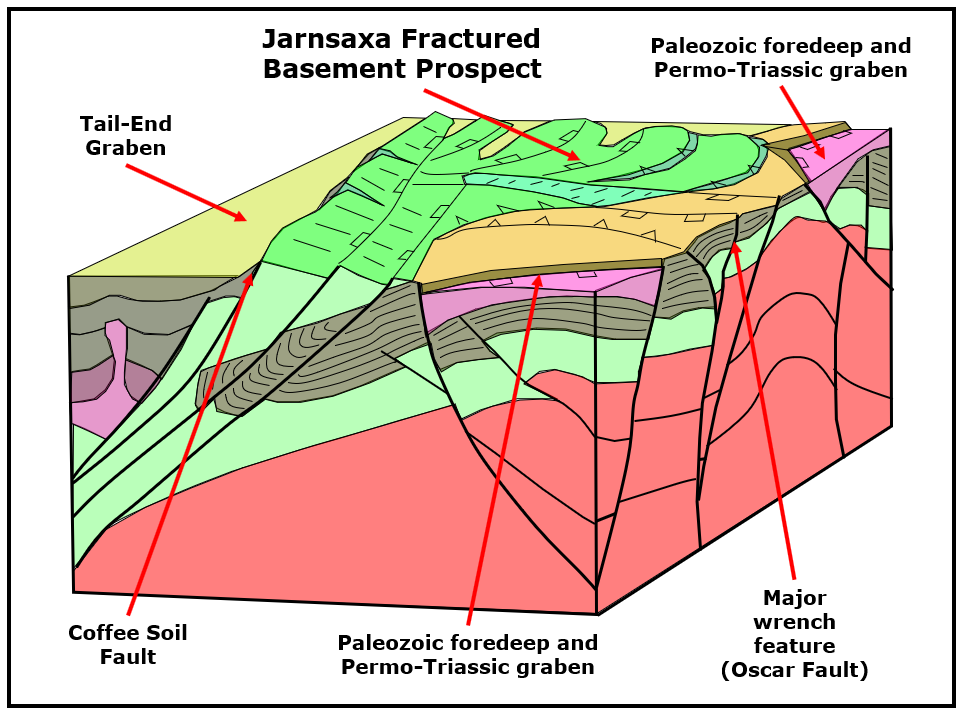
Figure 3: A working hypothesis – it might not be right, but it’s a start
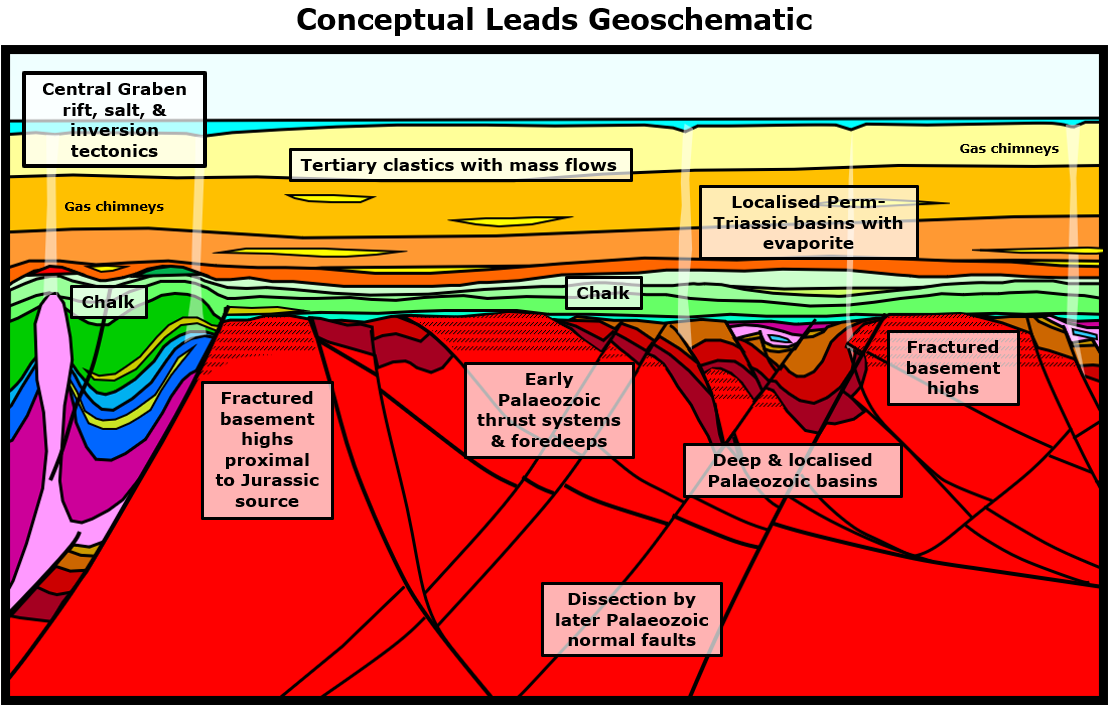
Figure 4: Conceptual leads in the study area, some riskier than others, but all with improving resolution
Recording
Venue Information
Venue information
Venue name:
The Geological Society, London
Venue phone:
+44 (0)20 7434 9944

